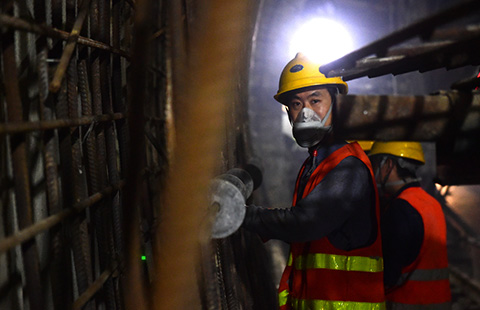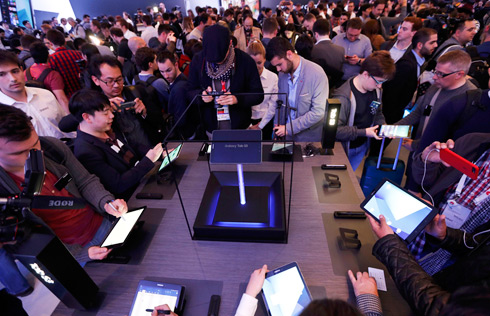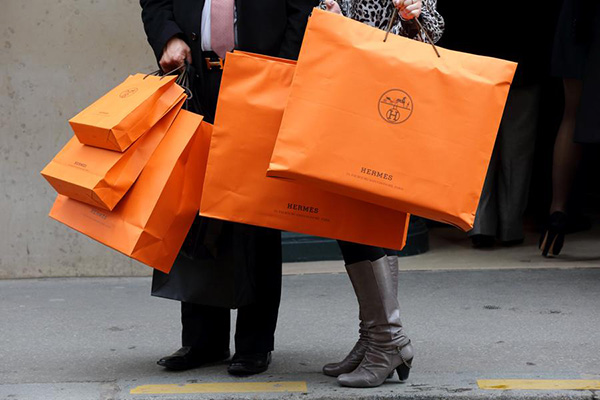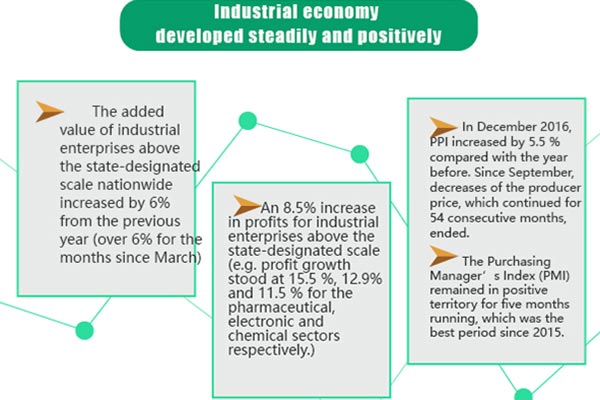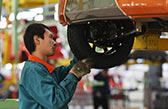Cutting-edge technology, higher quality transforming image of 'Made-in-China'
BEIJING - With unremitting efforts of Chinese industries to move up the global value chain, more consumers around the world are recognizing the higher quality and cutting-edge technology of "Made-in-China" products.
China introduced the "Made in China 2025" blueprint in May 2015, listing several tasks for the manufacturing industry, including boosting innovation, fostering Chinese brands and promoting service-oriented manufacturing.
Thanks to the country's innovation drive, high-tech products made in China and indigenous Chinese brands have in recent years entered daily life of worldwide consumers and taken a growing share of the international market.
More and more users and observers have come to agree that "Made-in-China" is now more about high technology and quality and less about large quantity at low prices.
From "made in china" to "created in china"
In many countries, including the Czech Republic, "Made-in-China" once meant cheap commodities. Nowadays, this impression has begun to change.
With China-Czech trade on the rise, more Chinese high-tech products are entering the Czech market, noted Cheng Yongru, commercial counselor of the Chinese embassy in the central European country.
Those Chinese products once peddled with low prices now have been replaced by quality ones, Cheng added.
In the Czech Republic, as well as across Europe, Chinese telecommunications, electronic and mechanical equipment companies are gaining a larger market share.
For example, the share of Chinese tech giant Huawei in the Czech smartphone market has exceeded 24 percent, ranking third after Apple and Samsung.
As a matter of fact, Huawei already became the world's third-largest smartphone brand in 2015, with a shipment of 108 million devices.
Huawei's fast growth stems from its long-term investments in research and development (R&D).
The company invested $38 billion in R&D in the last 10 years, Richard Yu, head of Huawei's Consumer Business Group, told Xinhua during the Consumer Electronics Show held last month in the US city of Las Vegas.
In 2015 alone, Huawei spent $9.2 billion on R&D, making it a larger investor in R&D than Apple and Cisco and the ninth largest among all its peers across the world, added Yu.
As of June 2015, Huawei had submitted more than 76,000 patent applications in China, the United States and Europe.
According to a report published by the World Intellectual Property Organization (WIPO) last November, China surpassed the United States, Japan and South Korea to rank top in the world for patent applications, receiving over 1 million applications in 2015.
Last August, China also joined the ranks of the world's top 25 innovative economies in the Global Innovation Index released by Cornell University, international graduate university INSEAD, and the WIPO.
"This is in keeping with all the developments that we have seen in China in recent years, including the use of innovation as a major component in the transition of the Chinese economy from 'made in China' to 'created in China,'" said Francis Gurry, director general of the WIPO.
Quality & cost-effective
In Fiji, an island country in the South Pacific Ocean, low-end products from China such as textiles and petty commodities for daily use still take up a significant market share. However, products such as buses, personal computers and mobile phones are quickly making their presence felt.
On the streets of the Fijian capital of Suva, as well as on Queens Road connecting Suva with the tourism hub of Nadi, old buses are typically out-of-date Japanese ones manufactured more than a decade ago, while new buses tend to be Chinese brands, such as King Long and Yutong. Vodafone and Digicel are two major mobile telecommunications carriers in Fiji. The former's base stations are provided by Chinese company ZTE, while the latter uses base stations manufactured by Huawei.
In electronics stores across Fiji, Chinese mobile phone brands such as Huawei, ZTE, Xiaomi, OPPO and OnePlus are popular and seen by many locals as being more cost-effective. They compete face to face with Apple and Samsung.
In the realm of personal computers, Chinese brands, led by Lenovo, take up a considerable market share, while in the home appliances sector, TV sets, air conditioners, washing machines and microwave ovens manufactured by Chinese companies such as Haier, Hisense and Gree are widely seen on the Fijian market.
For a developing country with humble purchasing power, cost performance is one of the key concerns for local customers, and Chinese electronic products are typically seen to better address those concerns.
After his recent visit to China, Sitiveni Qiliho, commissioner of the Fiji Police Force, expressed his strong interest in acquiring Chinese unmanned aerial vehicles, which he said will greatly help the police better monitor illegal cultivation of marijuana.
Chinese drones tend to be more affordable, Tiale Vuiyasawa, a senior official with Fiji's Ministry of Defense, told Xinhua.
Liao Xiaoping, secretary general of the Fiji-China Business Council, said that in recent years Chinese products no longer feature large quantities supported by low prices, and the change reflects progress of Chinese technology.
Cutting-edge technology for Olympics
The 2016 Summer Olympic Games in the Brazilian city of Rio de Janeiro saw a widespread use of 360-degree cameras capable of providing high-definition surveillance. They were installed on Rio's streets and a number of venues to serve the international event.
Those cameras were produced by Dahua Technology, a video surveillance equipment manufacturer headquartered in east China's Zhejiang Province, and its products accounted for 80 percent of all security equipment used during the 2016 Rio Olympics.
Alongside Dahua's presence is the growing trade between China and Brazil. China surpassed the United States to become Brazil's largest trading partner in 2009, with Made-in-China products becoming commonplace in the daily life of Brazilians.
According to Brazilian official statistics, high-tech commodities imported from China, such as telecommunications equipment, mechanical engineering equipment and cars, made up a larger share of total imports last year, while goods such as clothing, textiles and toys saw a decrease.
"Today, there are a lot of high-tech products in our lives," said Diogo Gomes, an editor of Brazilian news weekly IstoE. "We are surrounded by mobile phones and computers that were produced in China."
Mauricio Santoro, a professor of international relations at the State University of Rio de Janeiro, said more and more competitive Chinese high-tech brands have entered the Brazilian market and gained recognition and public praise in the South American country.
"This reflects China's rising capability in scientific and technological innovation and Chinese enterprises' global vision on development," he said.







